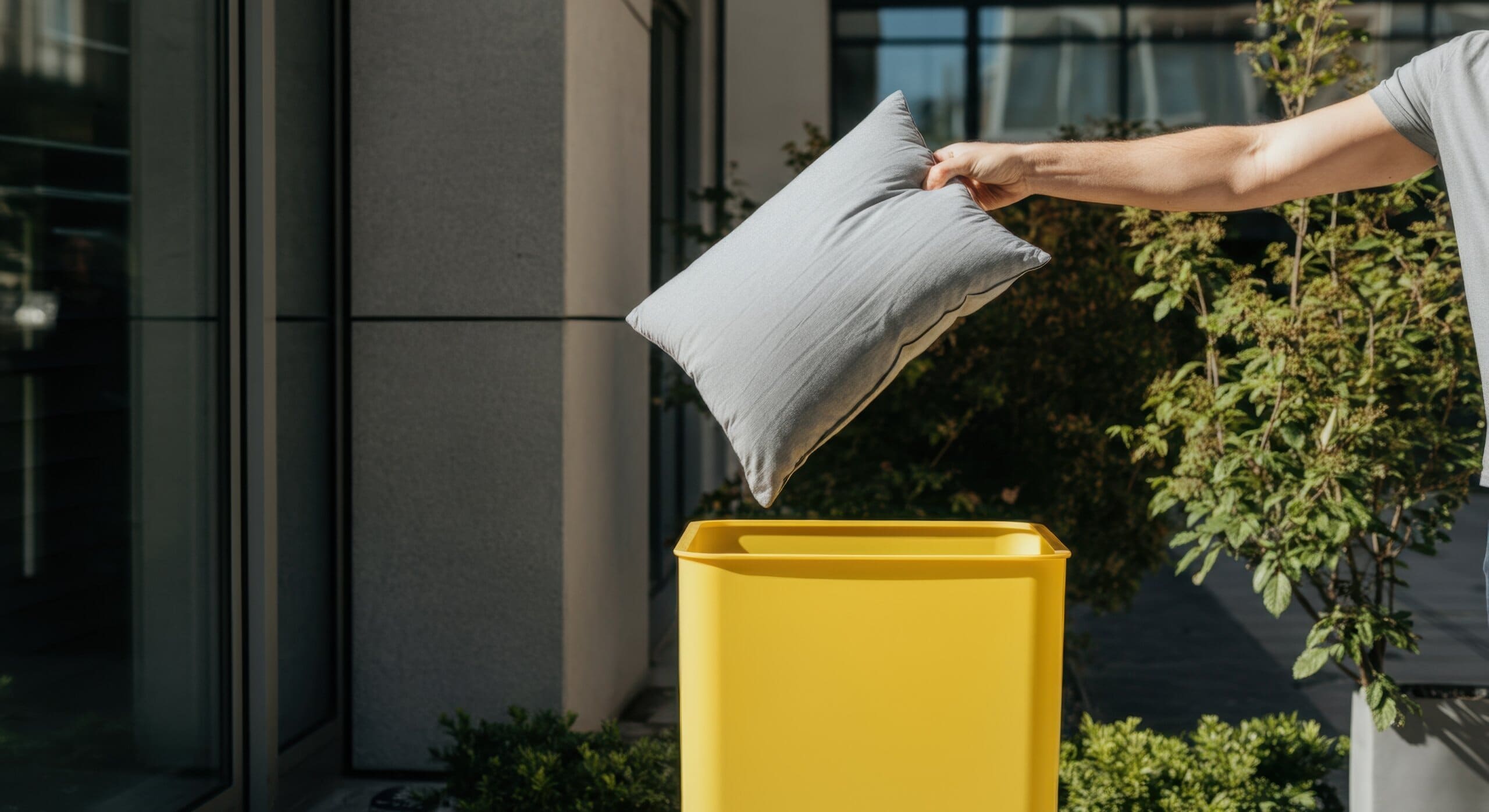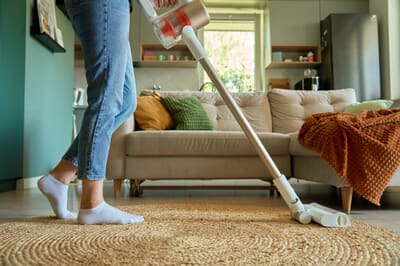There’s no better feeling than a brand-new pillow after you've finally had enough of your old, flattened, slightly musty one. Perhaps you want to change the sort of stuffing you typically use, or maybe it’s time to upgrade your bedroom pillows, but they’re a little too tatty to pass on to the guest room. Either way, you might not be sure how to dispose of old pillows properly.
Read on to learn more about what you can do with old pillows once you’re done with them. We’ll explore everything from when you should replace them to how to dispose of old pillows without throwing them in the bin – including how to recycle old pillows.
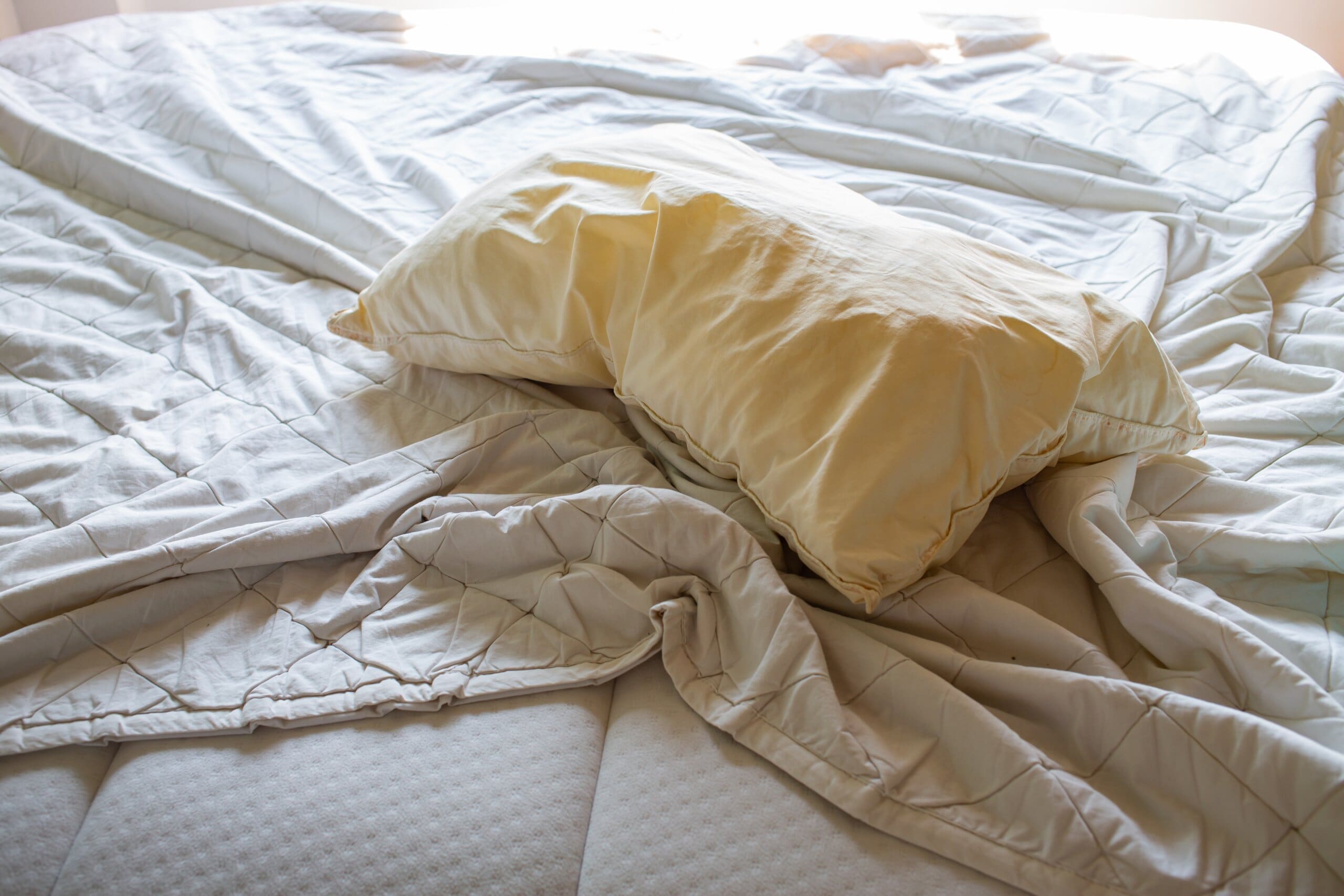
How long do pillows last?
On average, we spend a third of our lives sleeping. So, it’s no surprise that after eight hours of getting our heads down every night, our pillows will eventually get a little lumpy and out of shape. According to the Sleep Foundation, we’re generally advised to replace our pillows every year or two – making sure they’re clean, supportive, and free of allergens.
Everyone has different preferences for how they like their pillows. Whether you’re a plush, natural down type of person or you prefer supportive hollow-fibre filling, some pillow materials are more durable and last longer than others.
- Natural down and feather pillows – Most natural feather and down pillows last around one to three years, although it can depend on their structure. Feather pillows with several internal chambers may last longer and hold their shape better over time.
- Polyester and synthetic pillows – Synthetic pillows are often more affordable and can be better suited for those who prefer hypoallergenic bedding. However, cheaper pillows can have a shorter lifespan, lasting between a year and two years.
- Memory foam pillows – Sturdy and supportive, memory foam pillows may last approximately two to three years.
- Latex pillows – A luxurious alternative to memory foam, latex pillows are hypoallergenic and can last up to five years with proper care.
- Bamboo – Bamboo memory foam pillows are soft, breathable and often antibacterial, lasting anywhere up to two years.
Cleaning and maintaining your pillows properly can help extend their lifespan. Make sure to change your pillowcases as often as your sheets when you change your bedding to help keep your pillows in good condition.
When should you replace your pillows?
You can often tell when to replace your pillows if they begin to sag, flatten, or become lumpy. If you find yourself waking up with a sore neck, it’s a good sign to check if your pillows are still supportive enough.
However, while your pillows might feel fine, it’s often a good idea to give them regular health checks to inspect their overall condition. Consider the feel, smell and appearance of your pillows to check if they’re still in good condition. For example, if you notice your pillows are discoloured with excessive yellowing, it’s probably time to get new ones.
Why should you replace pillows?
Beyond causing sore necks and finding yourself in uncomfortable positions, old pillows can also accumulate face and hair oils, sweat, drool, and dust mites in your bed (glamorous, we know). Not to mention pet dander if you share your bed with your dog or cat sometimes.
Allergens such as dust, fungus, and pet hair can sometimes trigger itchy skin, irritated eyes, and runny noses. Meanwhile, the buildup of face and hair oils can also clog your pores and irritate sensitive skin. So, it’s important to replace your pillows regularly to help avoid pillow-related allergies, as well as offer proper neck support and spinal alignment.
It could also be that your current style of pillow simply isn’t serving you anymore. It’s normal for your needs to change over time. When it comes to replacing your bedding, it’s a good idea to take some time to consider which type of pillow is right for you.
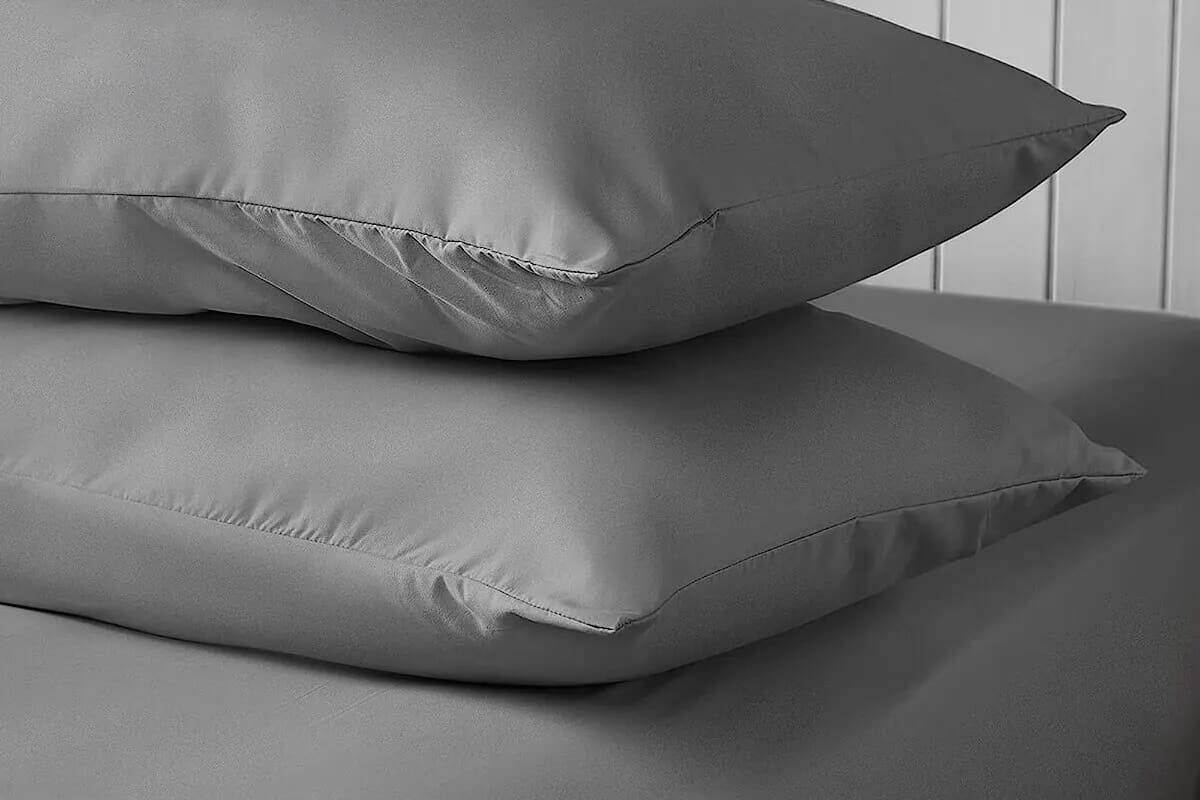
How to dispose of old pillows in the UK
We’ve done the maths. If we sleep for one-third of our lives, that’s approximately 25 years spent asleep. And if we replace our pillows every year or two, this equates to around 12 to 25 pillows in our lifetime. So, what do we do with our old pillows?
You might be aware that there are options for mattress recycling, but what about other bedding? You have several options to dispose of old pillows while saving them from ending up in the landfill.
Can you recycle old pillows?
Though it’s best to check with your local council, you generally can’t recycle household items such as bedding, quilts, and pillows locally from your doorstep. However, they may be recycled at some out-of-home recycling points. You can also repurpose natural feathers from old pillows for your garden.
From your bed to your flower beds, compost your old pillow feathers to fertilise your plants. Natural feathers break down within a few months, providing a source of nitrogen-rich nutrients for your garden.
Donate good-quality pillows to charities and textile banks
If your pillows and bedding aren’t right for you anymore and you have no purpose for them at home, you might be able to donate clean and good-quality pillows to local charities and textile banks.
While it can depend on the charity or textile bank, you can often donate clean items such as:
- Pillows
- Bedding
- Throws
- Blankets
- Towels
- Pillowcases
- Cushions
- Cushion covers
- Curtains
- Tea towels
It goes without saying that you can’t donate items that are wet, dirty or contaminated.
If you have any pillows and bedding that look a little worse for wear and can’t be used again, you can also wash and donate them to local animal charities. Charities such as the RSPCA and Dogs Trust will use donated pillows and duvets as bedding for rescue animals while they wait for their forever homes.
Recycle as energy recovery
Unlike natural down and feather pillow filling, polyester filling can take anywhere up to 200 years to decompose. If you must throw them away, you should take any pillows, bedding, and quilts to a 'waste-to-energy' recovery skip. You can often find these at your nearest household waste and recycling centre.
Energy recovery is one of many zero landfill and zero waste solutions to help reduce greenhouse gases and the demand for fossil fuels. It turns waste products into energy, where they might have otherwise gone to landfill.

What else can you do with old pillows?
There are plenty of ways you can recycle old pillows around the house too. If you fancy a new DIY project, start by washing your pillows or spot-cleaning them to freshen them up, then consider one of the ideas below:
Floor cushions
Make use of every inch of fabric – and every inch of your floor – by fashioning new floor cushions with your old pillows. From pillow forts to cosy movie nights, repurpose your pillows by adding new, durable pillowcases for sitting on the floor. Or if you’re blessed with sewing skills, why not craft your own?
You can make floor pillows using just one pillow at a time, or you can create a double-stuffed, wider floor pillow using two. That way, the next time you have more guests than you have seats, everyone gets a perch.
Pet beds
Make a comfy corner for your furry friends using old pillows and bedding. Following the same process as making a floor pillow, make a brand-new pet bed for the floor or replace your pillowcases to add to their existing bedding.
Stuff another pillow
Pad out another pillow in your home using the synthetic or down-filling from your old pillows. It could be another sleeping pillow, throw pillow or something to keep in the car for the kids to nap on. It’s much better to make the most of your spare pillow filling than to see it go in the dustbin.
Draught excluder
Block pesky draughts from pooling into your home through gaps under the door by repurposing old pillow stuffing into a new draught excluder. Choose a fabric you love and craft one from scratch, or use some old items you don’t mind cutting up, such as:
- Pillowcases
- Old socks
- Tights
- Trouser legs
Stuffed toys
Whether your little one’s favourite teddy could use some extra stuffing, or you’d like to try your hand at crafting a new toy – use pillow filling to bring a stuffed toy to life.
If you’ve got a knack for crafts, sewing or crocheting, old pillow filling is perfect for making homemade stuffed toys and reducing waste. Got plenty of stuffing to spare? Consider making a few and donating them to charity.
Packing and moving materials
If you have extra storage space, you can keep old pillows to help pack out and protect fragile items while moving house. You could repurpose synthetic pillow stuffing using socks and tights to stuff fragile boxes or use whole pillows to wedge between items during transit.
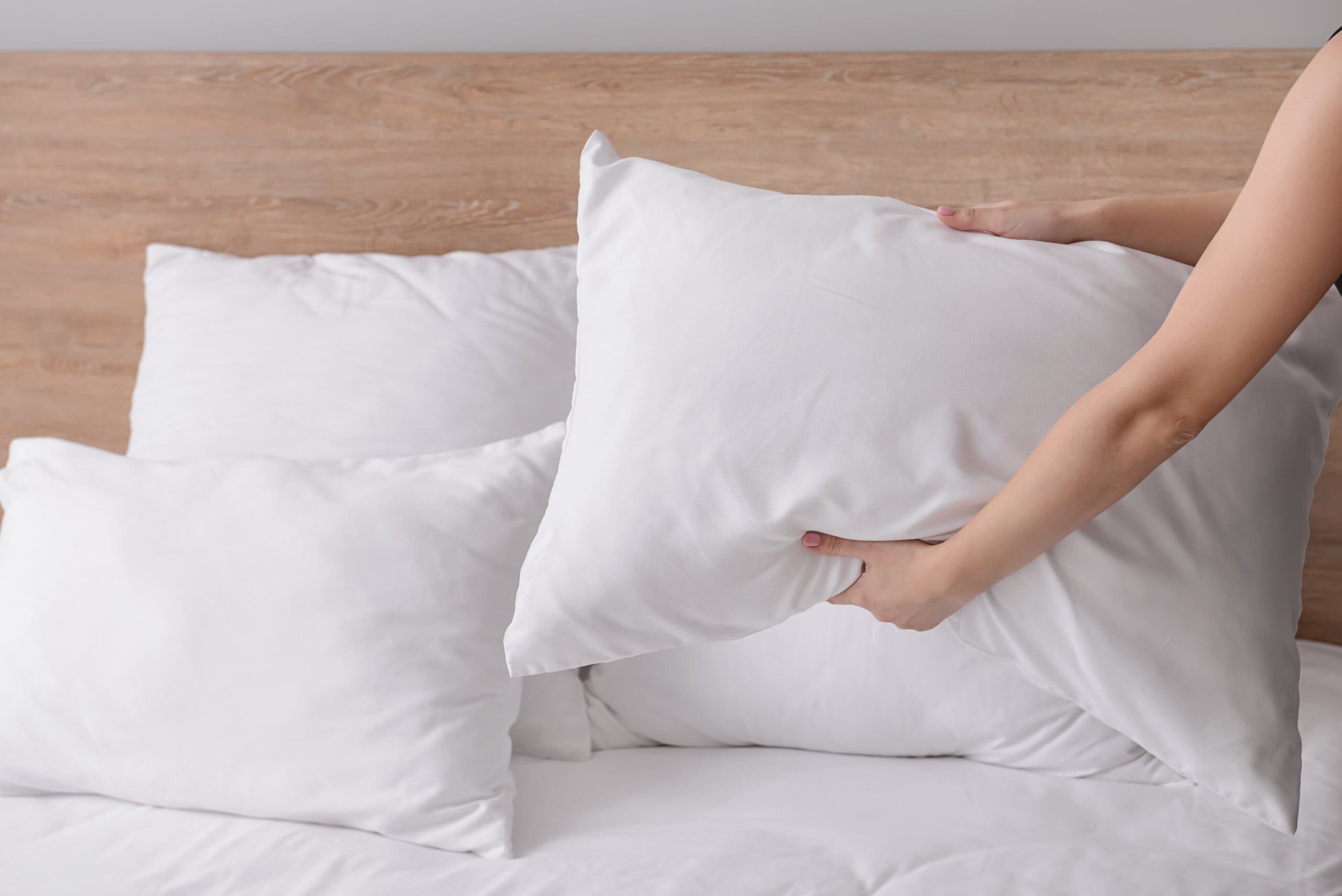
Bring balance to your bed with the perfect pillows
From donating to animal shelters to repurposing lumpy pillow stuffing for DIY projects, there are plenty of ways to dispose of your old pillows without throwing them away.
If you think it’s time to reconfigure your pillow set-up, you might also want to consider how many pillows you should be sleeping with. Alternatively, if you’re looking to upgrade your entire bed, explore our mattress buying guide and discover your ideal sleep sanctuary today. Learn more about getting better sleep with the latest trends, tips, and advice on our Snooze News blog.
